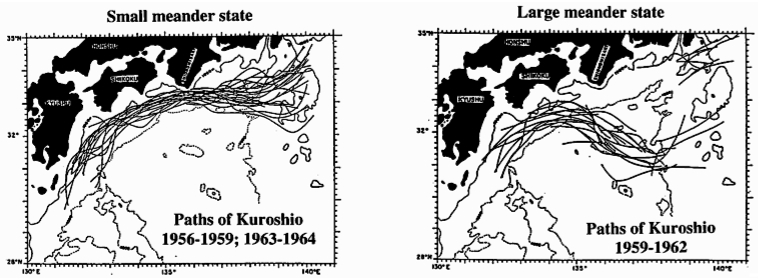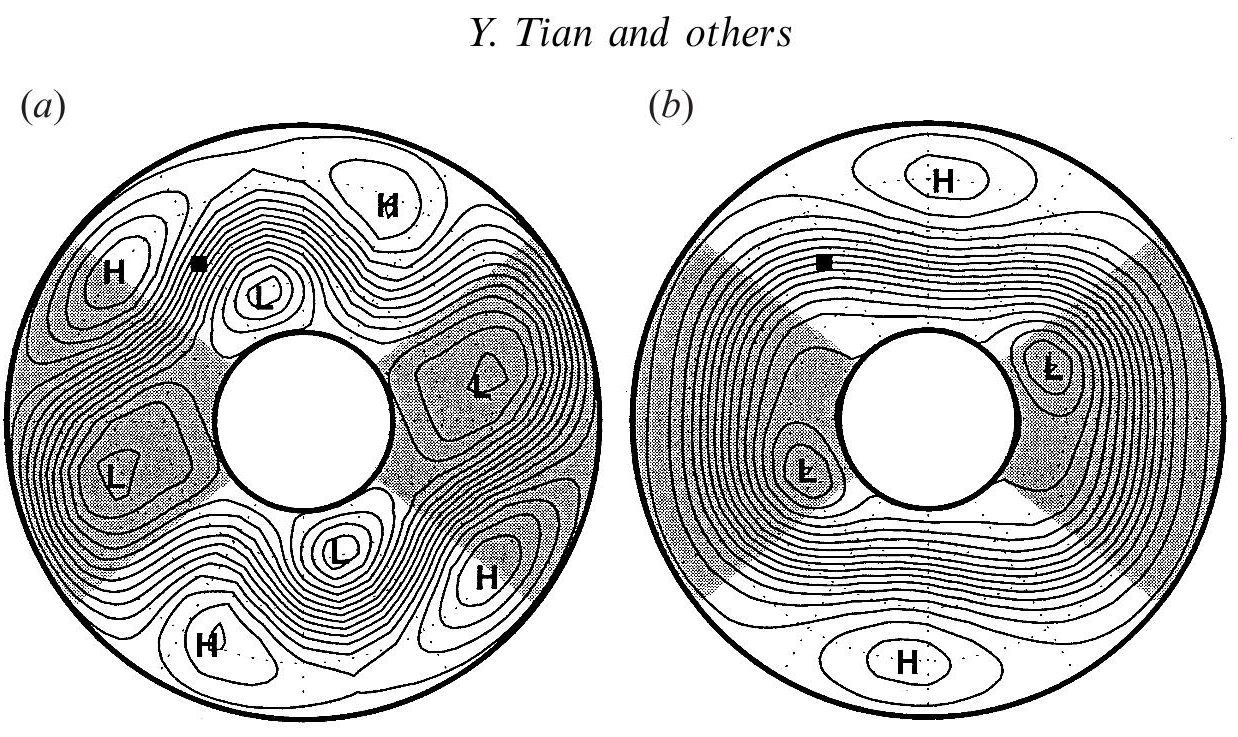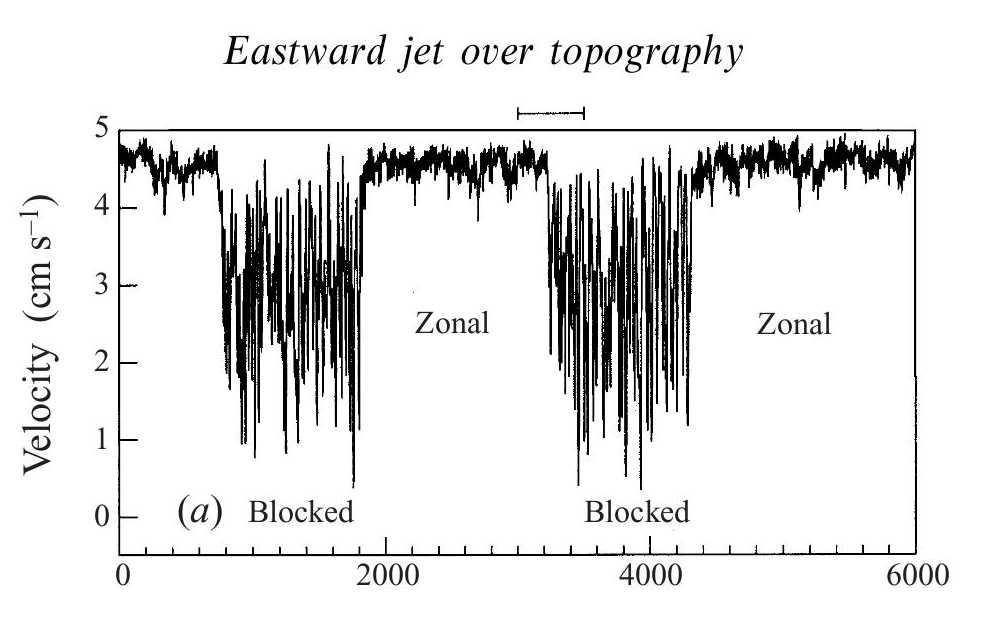STATOCEAN: Out of
equilibrium statistical mechanics
of geophysical flows and applications to the Kuroshio
current (east of Japan) and to the Zapiola anticyclone (east of
Argentina)
Statistical mechanics
Geophysical flows, oceans and atmosphere, have a major impact on our
societies, because they are at the core of the climate system and
because they have large economical, social and
environmental impacts.
These turbulent flows involve a huge number of
degrees of freedom, with an astonishing large range of both temporal
and spatial scales. It is thus extremely natural to understand and to
reduce this complexity using statistical mechanics tools.
Kuroshio current
The Kuroshio current (east of Japan) plays an essential role for the poleward heat transfer in the Pacific area. The study of its bistability and of the associated variability (fluctuations) are thus essential geophysical problems. Thanks to outstanding progress obtained during the last two decades by the oceanographer community, such phenomena are now reasonably reproduced in a hierarchy of models with increasing complexity.

Bistability of the paths of the Kuroshio during the 1956-1962 period: Paths of the Kuroshio in its small meander state (left) and its large meander state (right). The 1000-m (solid) and 4000-m (dotted) contours are also shown. [M. J. Schmeits and H. A. Dijkstra. Bimodal Behavior of the Kuroshio and the Gulf Stream. J. Phys. Oceanogr., 31:3435–3456 (2001); adapted from Taft, 1972]
Aims
- Apply the existing equilibrium statistical mechanics tools to the Kuroshio bistability phenomena
- Develop new tools of out of equilibrium statistical mechanics for these types of problems
- Reproduce in the lab bistability of currents, analogues to the Kuroshio
- Understand the Kuroshio bistability from a nonlinear dynamics point of view
Groups
The project gathers a group
specialized in the
statistical mechanics for geophysical flows (ENS-Lyon and INLN) and two
groups between the most important in dynamical oceanography in France
(LPO, Brest
and LEGI, Grenoble). In terms of ocean dynamics, these three groups are
able to perform numerical simulations at the forefront in terms of
quality, for all degrees of model complexity, from the more academic
models up to the more realistic ones. The experimental group (LEGI,
Grenoble) is also
recognized internationally as a leading one, due to its numerous
contributions to geophysical fluid dynamics.


Flow displaying bistable behaviour. Above: Time-averaged streamfunction field of the two types of flow, (a) blocked and (b) zonal (from a numerical simulation). Below: Time series of the velocity of the two flow types at some points, showing spontaneous transitions between the two flow states (from a rotating tank experiment). [Y. Tian, E. R. Weeks, K. Ide, J. S. Urbach, C. N. Baroud, M. Ghil, and H. L. Swinney. Experimental and numerical studies of an eastward jet over topography. J. Fluid Mech., 438:129–157 (2001)]



Flow displaying bistable behaviour. Above: Time-averaged streamfunction field of the two types of flow, (a) blocked and (b) zonal (from a numerical simulation). Below: Time series of the velocity of the two flow types at some points, showing spontaneous transitions between the two flow states (from a rotating tank experiment). [Y. Tian, E. R. Weeks, K. Ide, J. S. Urbach, C. N. Baroud, M. Ghil, and H. L. Swinney. Experimental and numerical studies of an eastward jet over topography. J. Fluid Mech., 438:129–157 (2001)]

